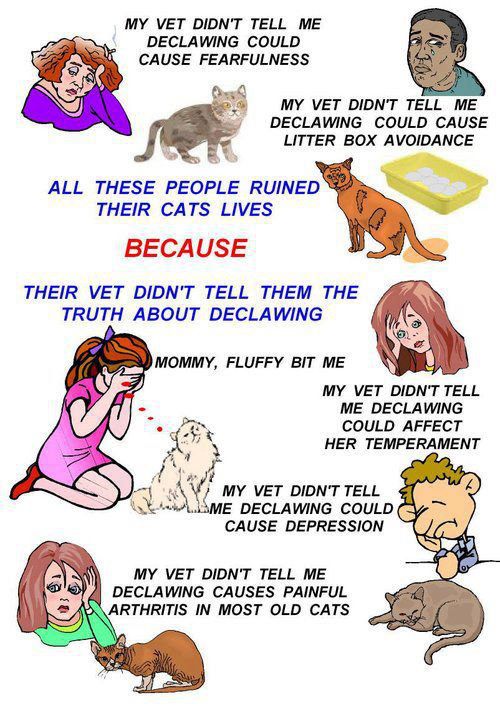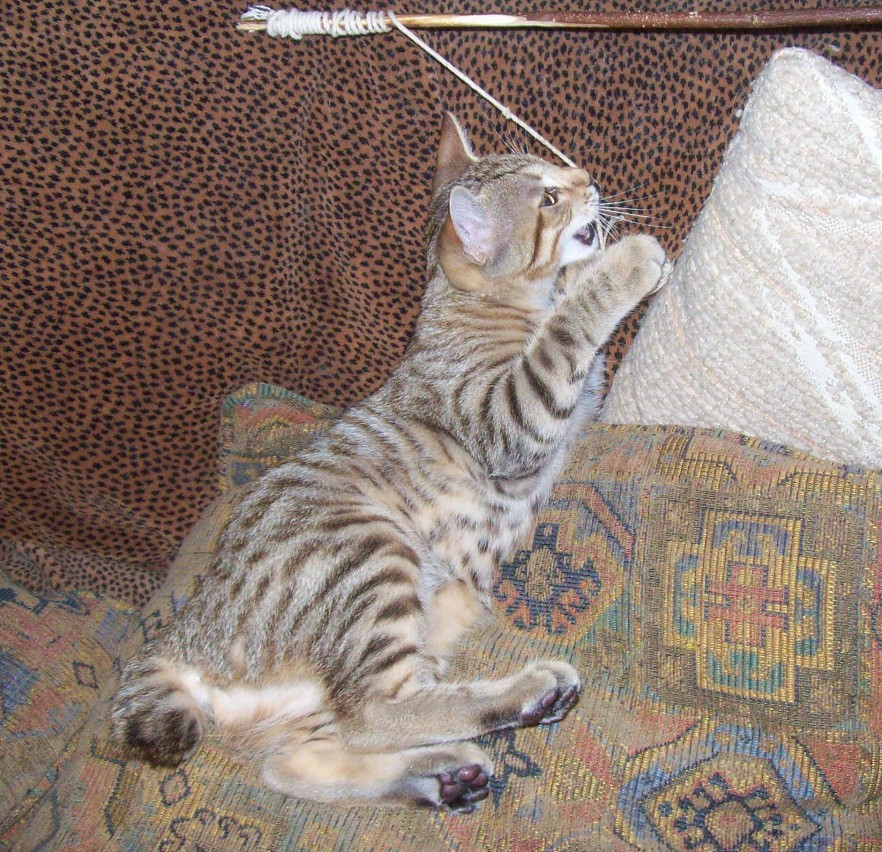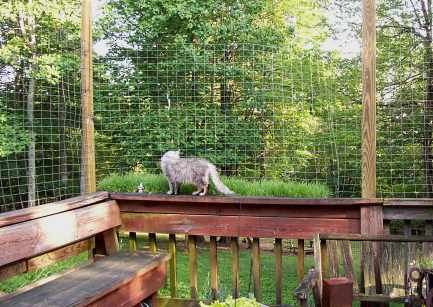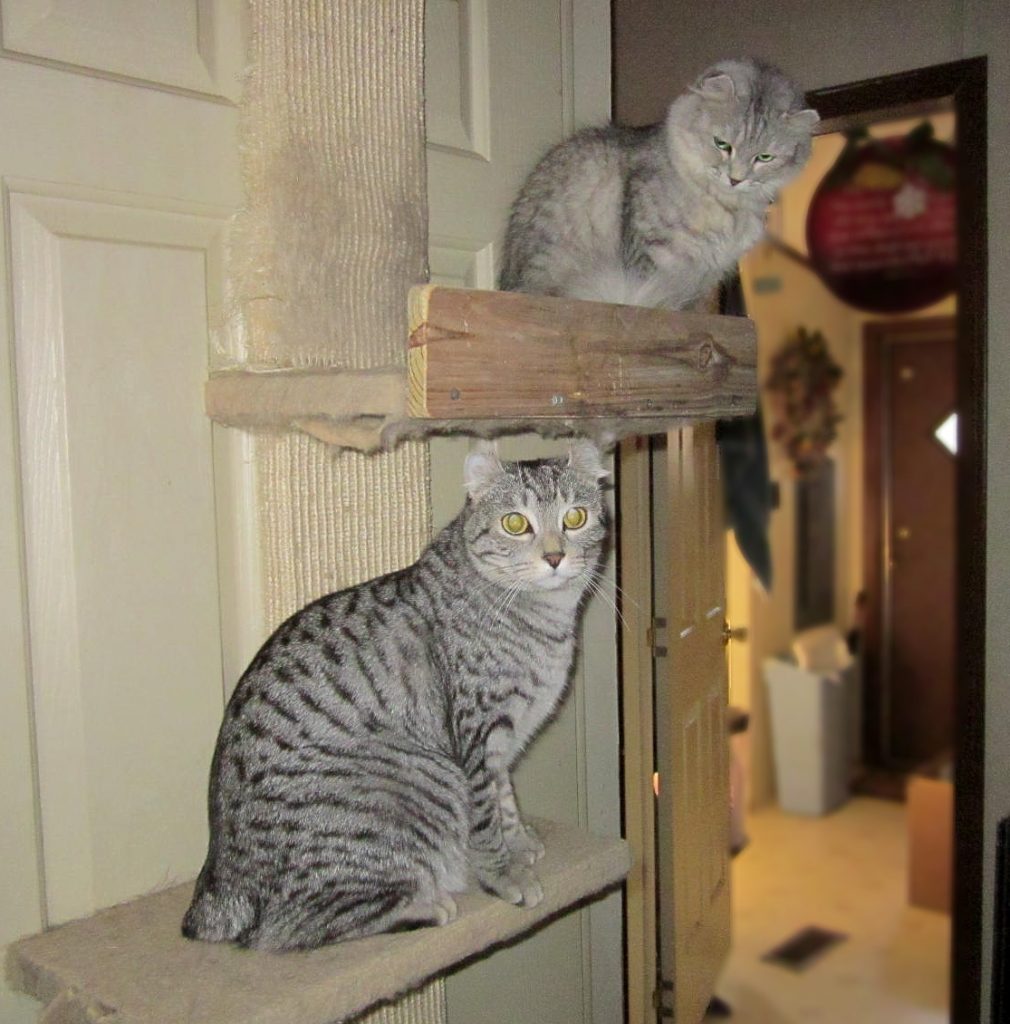There are a lot of people who think that declawing their Highland Lynx Kitten or cat is an acceptable and painless way to protect their furniture or clothing from their pets sharp claws. This could not be further from the truth! This so-called “quick fix” for unwanted scratching can cause long lasting side effects for your cat. The potential medical problems include infection, tissue death, back pain, nerve damage and depression, among others. It can also make a cat less likely to use the litter box, cause phantom paw pain, lameness and behavior changes (more likely to bite or be aggressive).
The false assumption is that declawing is simply removing or trimming the cats toenail. In reality, it is a painful and permanently crippling procedure where the first joint of the cats’ paw is cut off! Declawing involves the amputation of the last bone of each toe. If performed on a human being, it would be like cutting off each finger at the last knuckle!

Alternatives to Declawing
- DO NOT GET A CAT IF YOU ARE OVERLY CONCERNED ABOUT YOUR HOME FURNISHINGS! A cat is not the right pet for you if you are contemplating declawing or extremely worried about the damage a cat might cause in your home. Cats are wonderful companions, but they have teeth and claws and occasionally use them in ways you might not prefer. They also may occasionally throw up or have accidents outside the litter box. If this worries you please consider another type of pet!
- Protect Delicate Furnishings: Safeguard, cover or otherwise provide protection for furniture, curtains, etc. that are easily damaged.
- Regular Nail Trimming: This is a very helpful and important alternative to declawing cats. It involves regularly trimming the nails very short so that they are less likely to become hung on things. Note that this will not stop them from sharpening their claws or using them to climb.
- Multiple Scratching Posts: It is extremely important to have many alternatives for your cats to climb and sharpen their claws on and scratching posts are one of the best options for that. If kitty has several acceptable areas where they can safely use their claws they are far less likely to use them in unwanted locations. Some cats may need encouragement to use their scratchers: hanging toys on them and rubbing them with catnip can often act as attractants.
- Training: Cats are very smart and much more trainable that people are often aware of. The use of treats as praise and various kinds of discouragements to steer them away from the wrong behavior can be effective if the owner is consistent. Especially when started as kittens, cats can easily be redirected from inappropriate use of claws to a toy or scratching post. Try YouTube for how to train your cat.
- Provide Plenty of Outlets for Energy: Cats are natural hunters and explorers. When we make them indoor pets, they can experience stress if not provided with an environment that has plenty of outlets for their inquisitive, playful energy. This includes providing things like scratching posts, interactive play time, toys, cat trees, window perches, etc.
- Vinyl Nail Covers: These vinyl nail caps for cat claws in a variety of colors. They are applied with adhesive and many cats will learn to tolerate them after a few days. This is more of a last resort and requires a patient owner but it is a better alternative than declawing.
- Pheromone sprays or diffusers: These are synthetic pheromones that can help to relieve anxiety or stress, which may or may not be related to some scratching behavior. In some cases it can help to spray diffuse near objects or areas in your home where your cat has exhibited undesired scratching.
Note: Most Highland Lynx Breeders do not allow declawing of their kittens and will consider a contract void if it is found that the Buyer has or is planning to declaw. In some cases declawing is even grounds for the Breeder to reclaim the kitten/cat.



